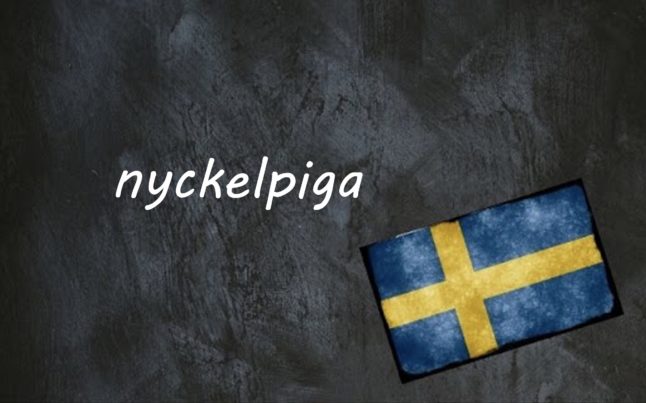The festive season is well and truly upon us, so what better time to take a look at the Swedish word for Christmas? Click here to read more
Swedish word of the day: jul https://t.co/bCyjWl3e2I pic.twitter.com/N4HLBzhMSP
— The Local Sweden (@TheLocalSweden) December 10, 2018
Our early Christmas gift to you is this festive word: en julklapp means 'a Christmas present'. Click here to read more
Swedish word of the day: julklapp https://t.co/264ea8yNMb pic.twitter.com/HYKfqvLfjE
— The Local Sweden (@TheLocalSweden) December 18, 2018
With just a few days to go until Christmas, this Swedish word will help you navigate your next julbord or Christmas party. Click here to read more
Swedish word of the day: snapsvisa https://t.co/FqEel9GRWu pic.twitter.com/MkzoRwTBaP
— The Local Sweden (@TheLocalSweden) December 19, 2018
This is one of the key players in the julbord buffet. But what's so princely about these small savoury snacks, and where does the word come from in the first place? Click here to read more
Swedish word of the day: prinskorv https://t.co/eHUsvP54E8 pic.twitter.com/lcTBboKRIt
— The Local Sweden (@TheLocalSweden) December 20, 2018
This is a festive Swedish word that might just spark a lively debate around the julbord. Click here to read more
Swedish word of the day: pumla https://t.co/yNA82UVSMt pic.twitter.com/eMy5OAvgl7
— The Local Sweden (@TheLocalSweden) December 21, 2018
Did you know that the Swedes have a special name for the night before the night before Christmas? Click here to read more
Swedish word of the day: uppesittarkväll https://t.co/tutYThQGPa pic.twitter.com/2bLiejTJ2P
— The Local Sweden (@TheLocalSweden) December 23, 2018
'Twas the night before Christmas, and all through the house, Swedish-learners were wondering, 'where does the word jultomte come from, anyway?' Click here to read more
Swedish word of the day: jultomte https://t.co/t5Vw14Y1Xv pic.twitter.com/ovckVpU1vC
— The Local Sweden (@TheLocalSweden) December 24, 2018
On the second day of Christmas, The Local gave to you, the story behind the Swedish word for the second day of Christmas. Click here to read more
Swedish word of the day: annandag jul https://t.co/CSKqk2PCxk pic.twitter.com/SgDCDYahxD
— The Local Sweden (@TheLocalSweden) December 26, 2018
You know those odd few days between Christmas and New Year when time seems to lose all meaning and your diet consists mainly of Christmas leftovers and chocolate? In Swedish, there's a word for them. Click here to read more
Swedish word of the day: mellandagar https://t.co/86eLuwY7n1 pic.twitter.com/93zddeUiB4
— The Local Sweden (@TheLocalSweden) December 27, 2018
It's fun to say, and more fun to drink. Click here to read more
Today's word of the day is glögg. Fun to say, fun to drink, fun to learn about its etymology, am I righthttps://t.co/VpuuBPp4XB
— Catherine Edwards (@CatJREdwards) November 23, 2018
We hope you enjoyed this collection of some of the Christmassy words from our Swedish Word of the Day series. To learn more phrases to help you survive the holidays, here's another handy article.



 Please whitelist us to continue reading.
Please whitelist us to continue reading.
Member comments